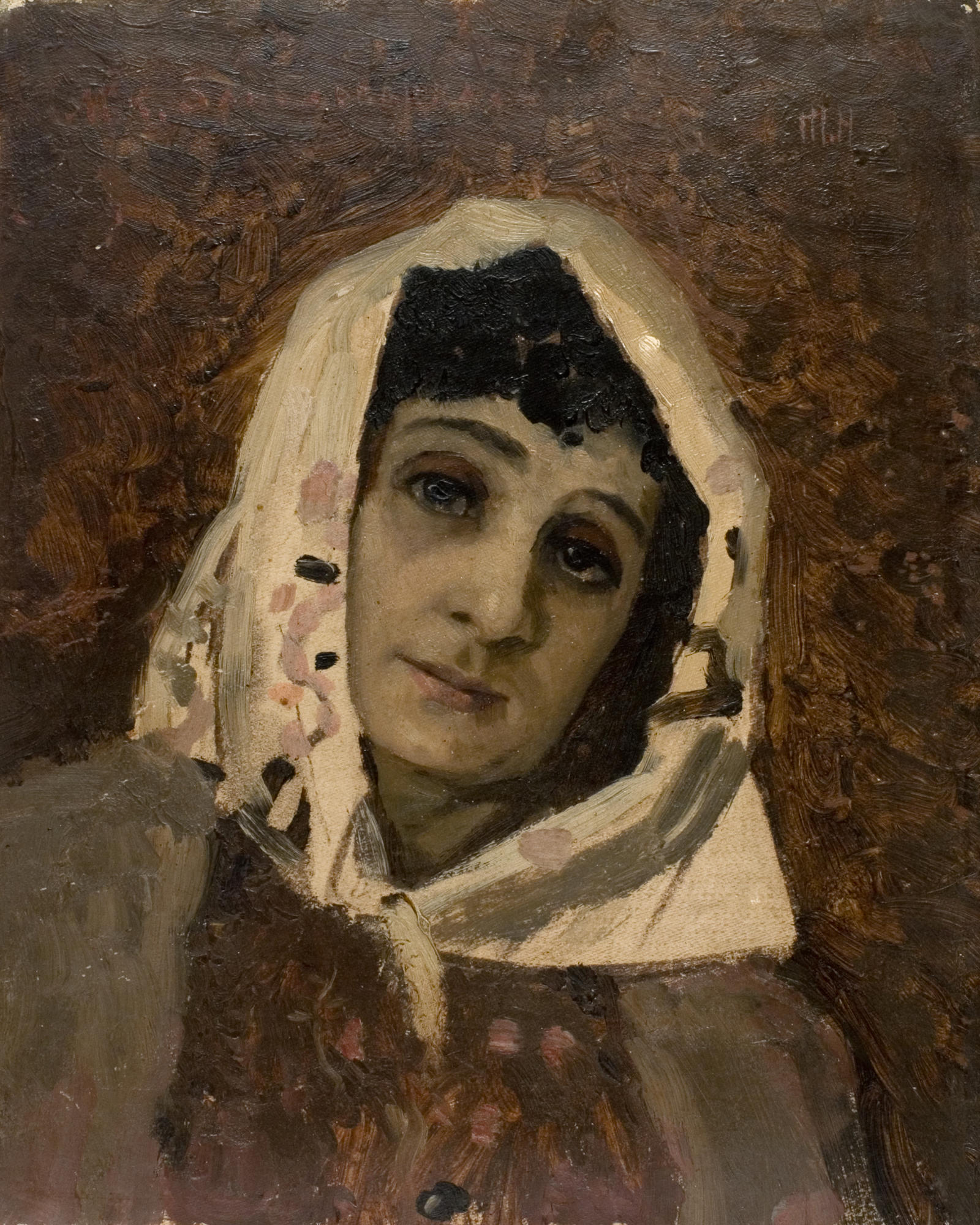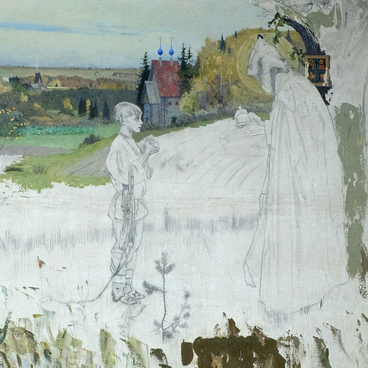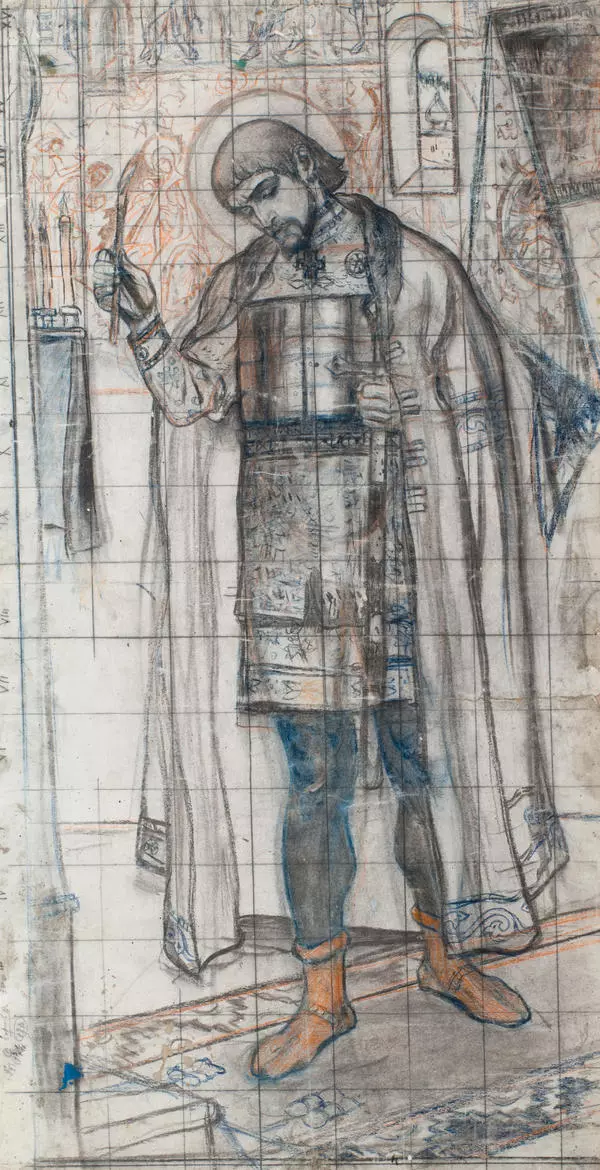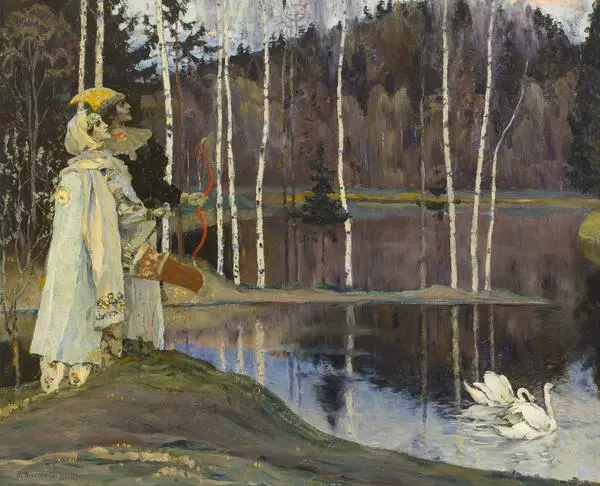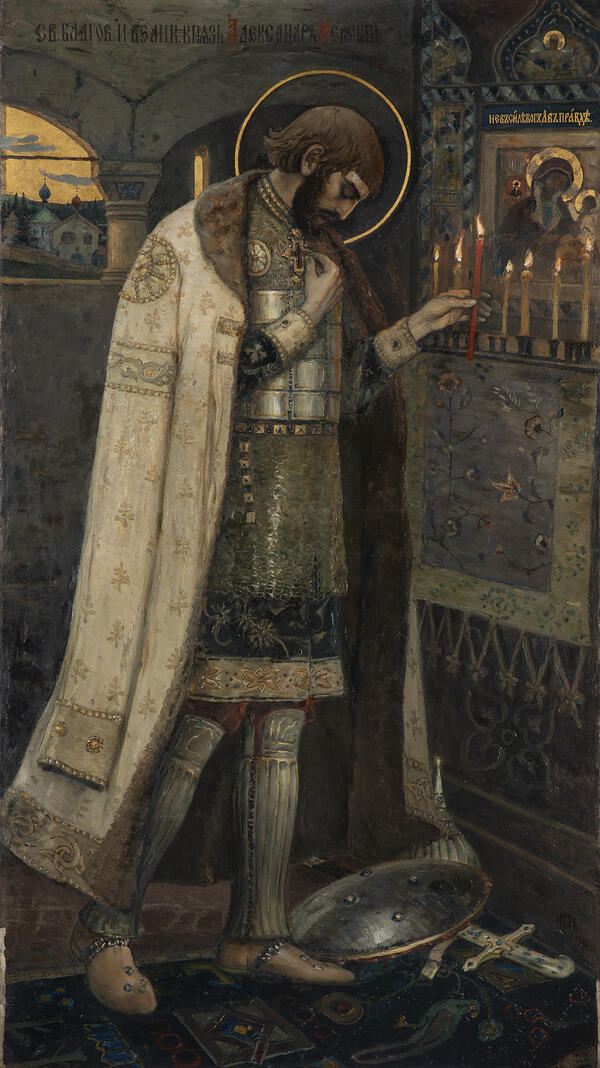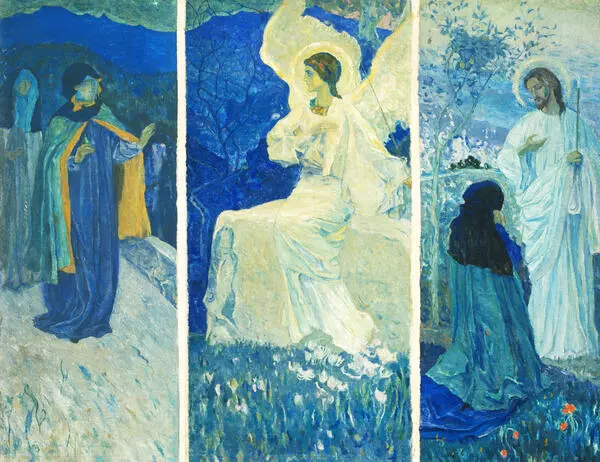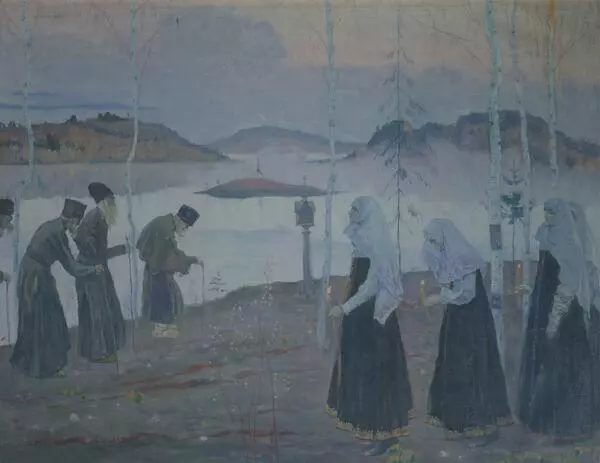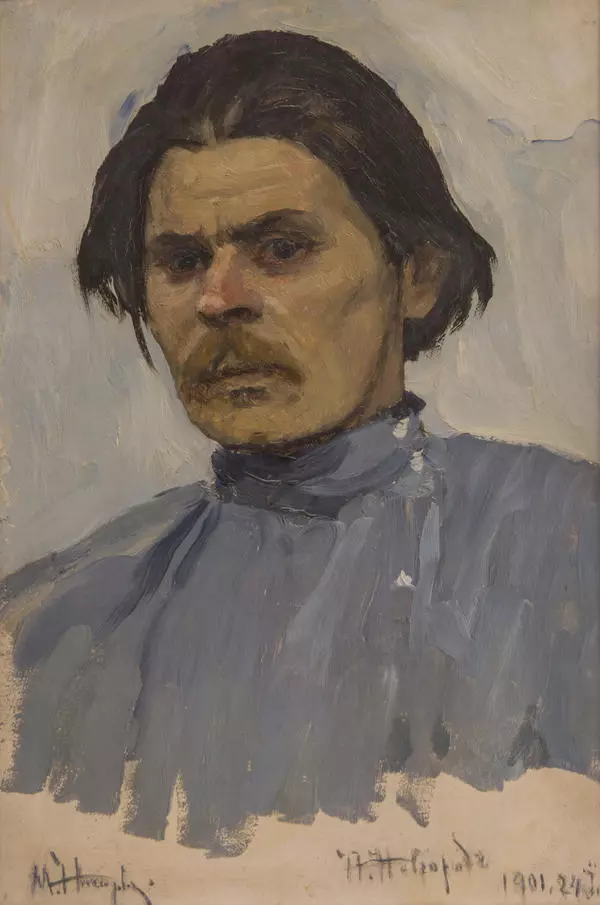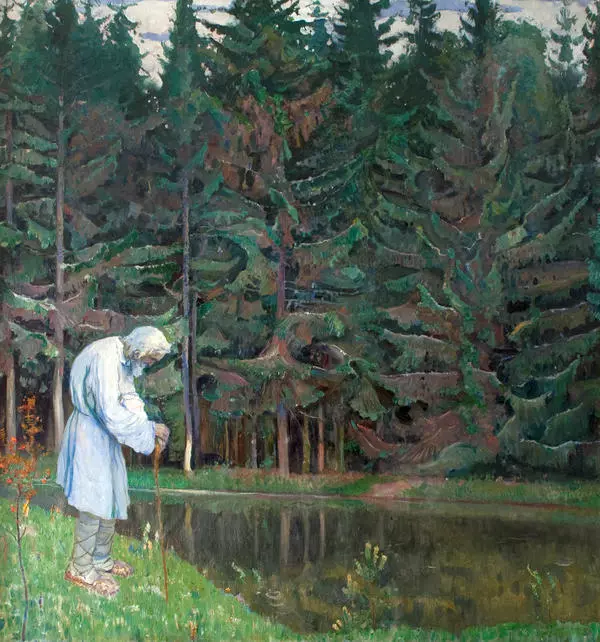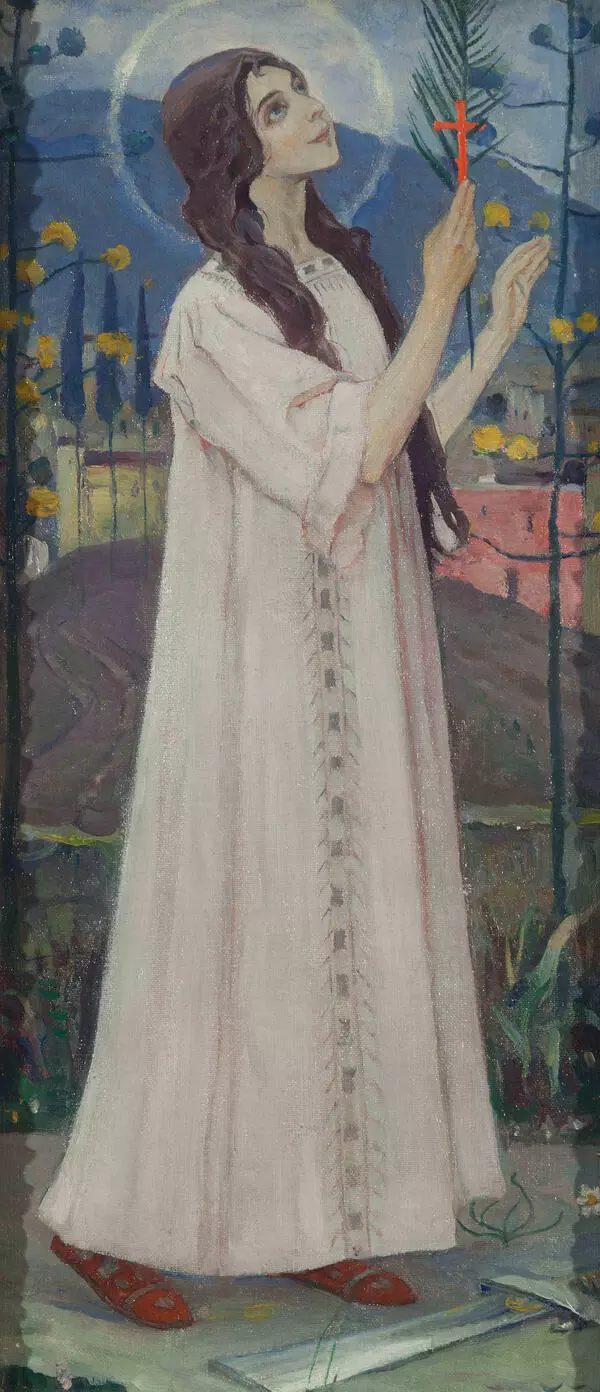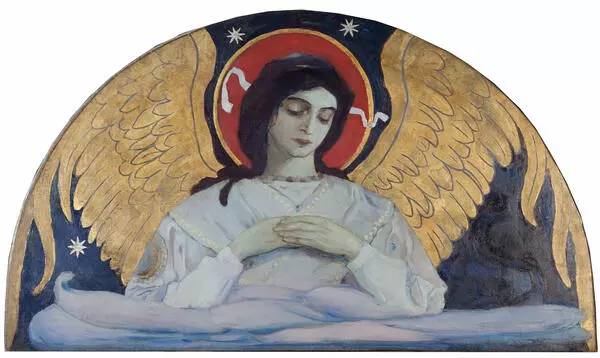A Sketch for the Portrait of M.K. Zankovetskaya is a graphic example of Nesterov’s incessant search for new ways in art. The artist worked on it in 1887 under the impression from the play staged after the drama Hired Woman Worker by Ivan Karpenko-Karoi where Zankovetskaya played the main part. The plot was devoted to the sore subject of the time — seduction of a poor girl by her master, and the acting astounded viewers so much by the depth of emotion that the artist himself called her a genius actress.
Maria Adasovskaya was born in 1854 in the village of Zanki, Chernigov Governorate. Having decided at the age of 28 to devote herself to the stage, she chose the stage name Zankovetskaya, under which she became well known to the general public. To be in the profession she loved she had to break the ties with her family and relatives. The actress excelled both in comedy and tragic roles and her acting was always a success. Lev Tolstoy, Anton Chekhov and Ivan Bunin were admirers of her talent.
Mikhail Nesterov was also charmed by the actress. In his book Past Days the artist shares his impressions from Zankovetskaya’s acting in Hired Woman Worker: ‘Her appearance on the stage, her look, articulation, the voice reaching right into your soul, tired sad eyes… it all enchanted us and we in the gallery and the whole theater was living the simple but very moving drama of the unfortunate girl. The Ukrainian accent, so musical, authentic costumes, naïve stage sets, these huts with cherry orchards — everything touched us.’
The emotions were so strong that Nesterov decided to paint the portrait of the actress in the costume of her character. The artist did not expect her to agree quickly and was prepared to persuade Maria Konstantinovna for a long time, but to his surprise, she did not object. The time spent with Zankovetskaya produced such a deep impression on Nesterov that his described in the book of his reminiscences the whole story of creating the painting.
The artist painted the chest-high study planning to enlarge the image later. The woman in the painting is not so young. One can see traces of fatigue in the face, dark shadows under her sad tormented eyes, lips tightly pursed. Still, the image has inexplicable charm that causes the viewer to admire this fine and nervous face. The artist was pleased with the portrait, Vasily Polenov coming on a visit also praised the painting.
However, once being in low spirits, the artist cut into pieces a number of his paintings. The portrait of Maria Zankovskaya happened to be among them. Only this sketch survived, which the artist later gifted to the Ufa Museum. This sketch is a sign of transformation in Nesterov’s interpretation of images that transpired by mid- 1880s, his main message: from then on, he will be interested in the inner, spiritual world of a person rather than their outer features.
Maria Adasovskaya was born in 1854 in the village of Zanki, Chernigov Governorate. Having decided at the age of 28 to devote herself to the stage, she chose the stage name Zankovetskaya, under which she became well known to the general public. To be in the profession she loved she had to break the ties with her family and relatives. The actress excelled both in comedy and tragic roles and her acting was always a success. Lev Tolstoy, Anton Chekhov and Ivan Bunin were admirers of her talent.
Mikhail Nesterov was also charmed by the actress. In his book Past Days the artist shares his impressions from Zankovetskaya’s acting in Hired Woman Worker: ‘Her appearance on the stage, her look, articulation, the voice reaching right into your soul, tired sad eyes… it all enchanted us and we in the gallery and the whole theater was living the simple but very moving drama of the unfortunate girl. The Ukrainian accent, so musical, authentic costumes, naïve stage sets, these huts with cherry orchards — everything touched us.’
The emotions were so strong that Nesterov decided to paint the portrait of the actress in the costume of her character. The artist did not expect her to agree quickly and was prepared to persuade Maria Konstantinovna for a long time, but to his surprise, she did not object. The time spent with Zankovetskaya produced such a deep impression on Nesterov that his described in the book of his reminiscences the whole story of creating the painting.
The artist painted the chest-high study planning to enlarge the image later. The woman in the painting is not so young. One can see traces of fatigue in the face, dark shadows under her sad tormented eyes, lips tightly pursed. Still, the image has inexplicable charm that causes the viewer to admire this fine and nervous face. The artist was pleased with the portrait, Vasily Polenov coming on a visit also praised the painting.
However, once being in low spirits, the artist cut into pieces a number of his paintings. The portrait of Maria Zankovskaya happened to be among them. Only this sketch survived, which the artist later gifted to the Ufa Museum. This sketch is a sign of transformation in Nesterov’s interpretation of images that transpired by mid- 1880s, his main message: from then on, he will be interested in the inner, spiritual world of a person rather than their outer features.
